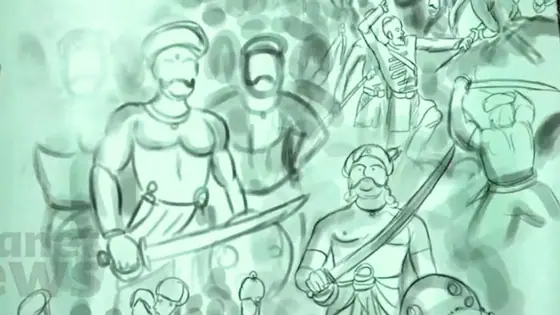
India@75: Polygars, the greatest challenge to East India Company
For many decades, many heroic Polygars across the region offered stiff resistance and also even brought the British East India Company to its knees. But the superior might of the Company finally triumphed, and many Polygar heroes ended up martyrs.
During the 18th century, the greatest challenge to the British East India Company came from the revolt of Polygars of Southern Tamil Nadu. Polygars or Palayakaraars were the regional military and revenue officials during the time of the Vijayanagar empire.

The empire's collapse and the advent of the English East India Company altered the power equations of the region. The company began collecting taxes driving the Polygars to penury. The warrior tribes of Polygars began to hit back heavily.
Also Read: India@75: Inspiring story of Haipou Jadonang Malangmei, the legendary Naga leader
For many decades, many heroic Polygars across the region offered stiff resistance and also even brought the Company to its knees. But the superior might of the Company finally triumphed, and many Polygar heroes ended up martyrs.
They included Puli Thevar, Kattabbomman, Oomithurai, and Maruth Pandyars. Many of them had also allied with Pazassi Raja and also Travancore. When Travancore changed sides to support the Company, Polygars turned hostile to them.
Also Read: India@75: The unknown story of women freedom fighters from Assam
Puli Thevar, who reigned the Madurai-Tirunelveli region, was one of the first Polygar heroes. Born in a warrior tribe of Maravars whom the English called bandits, Puli fought the East India Company and its ally, the Nawab of Arcot, with heart and soul. At home with jungle roots and adept in guerilla warfare, the Marava army launched lightning strikes on the enemy.
In 1755, Thevar's army even defeated the Company army at his homeland of Nelkaattumsevval in Tirunelveli and even killed its leader, Colonel Alexander Heron. This victory made Puli the unquestioned hero of the Tamil region and increased his strength manifold by forging an alliance with the neighbouring Raja of Thiruvitamkoor, who had the most powerful European-trained modern army in the region.
The Tiruvitamkoor army was trained by the Dutch commander deLannoy after King Marthanda Varma made a historic win over the Dutch East India Company forces at the war of Kolachal in 1741. However, Thevar's alliance with Tiruvitamkoor also led to his final surrender. Tiruvitamkoor changed sides to support the Company and Arcot through the operations of a master strategist, Maruthanayagom.
Born to a backward caste Maruthanayakam had embraced Islam and assumed the name of Yusuf Khan. Trained in warfare and strategy by Europeans, Khan was engaged by the Company to lead their campaign against Puli Thevar. Maruthanayagom’s strategies, combined with the might of the forces of the Company and the Nawab, helped vanquish and capture Puli from the Madurai jungles. Puli Tevar was hanged to death at Kazhukumalai in 1761.
Also Read: India@75: Group of revolutionary women who took arms against the British empire